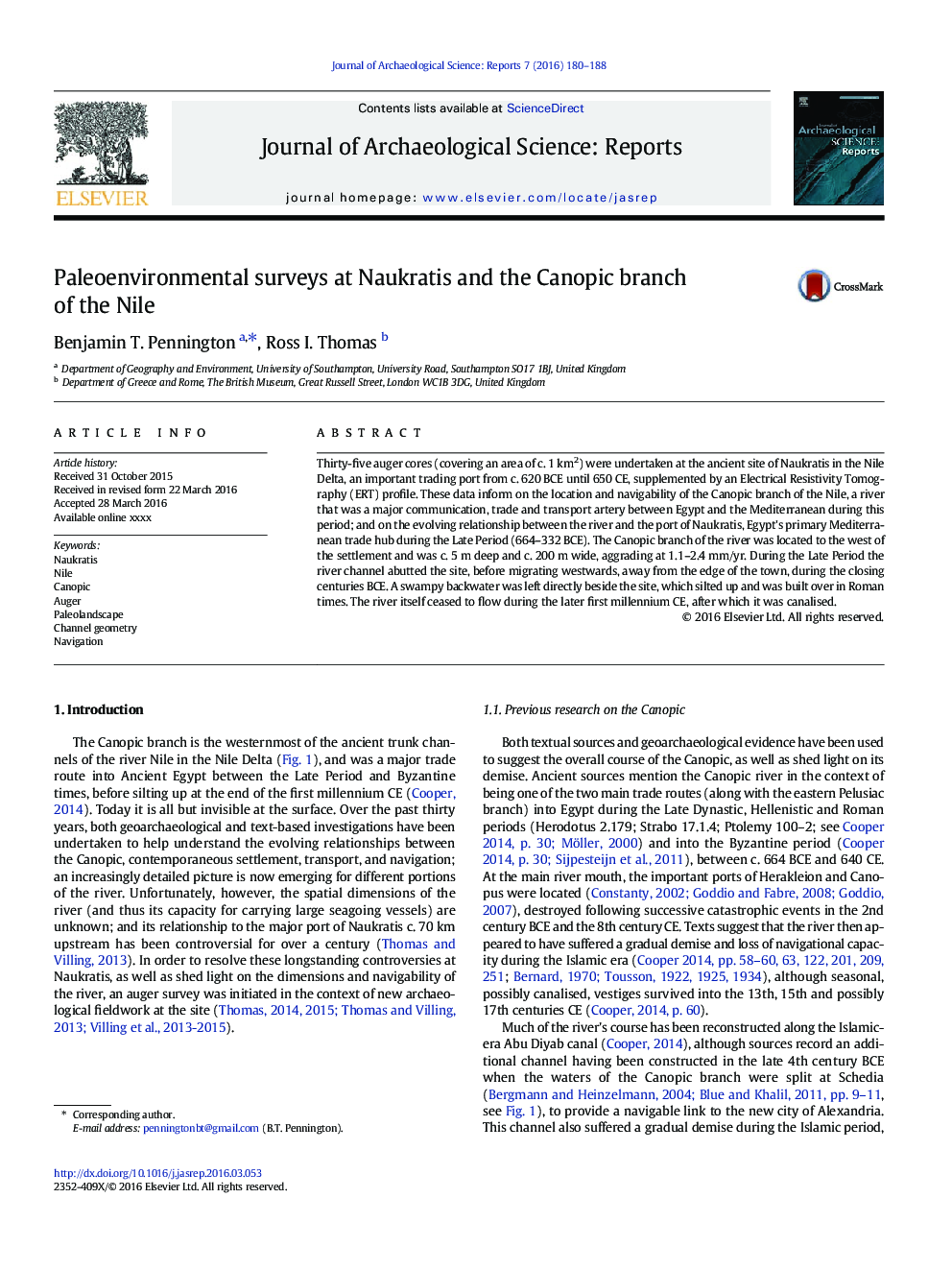| Article ID | Journal | Published Year | Pages | File Type |
|---|---|---|---|---|
| 7446436 | Journal of Archaeological Science: Reports | 2016 | 9 Pages |
Abstract
Thirty-five auger cores (covering an area of c. 1Â km2) were undertaken at the ancient site of Naukratis in the Nile Delta, an important trading port from c. 620Â BCE until 650Â CE, supplemented by an Electrical Resistivity Tomography (ERT) profile. These data inform on the location and navigability of the Canopic branch of the Nile, a river that was a major communication, trade and transport artery between Egypt and the Mediterranean during this period; and on the evolving relationship between the river and the port of Naukratis, Egypt's primary Mediterranean trade hub during the Late Period (664-332Â BCE). The Canopic branch of the river was located to the west of the settlement and was c. 5Â m deep and c. 200Â m wide, aggrading at 1.1-2.4Â mm/yr. During the Late Period the river channel abutted the site, before migrating westwards, away from the edge of the town, during the closing centuries BCE. A swampy backwater was left directly beside the site, which silted up and was built over in Roman times. The river itself ceased to flow during the later first millennium CE, after which it was canalised.
Related Topics
Social Sciences and Humanities
Arts and Humanities
History
Authors
Benjamin T. Pennington, Ross I. Thomas,
